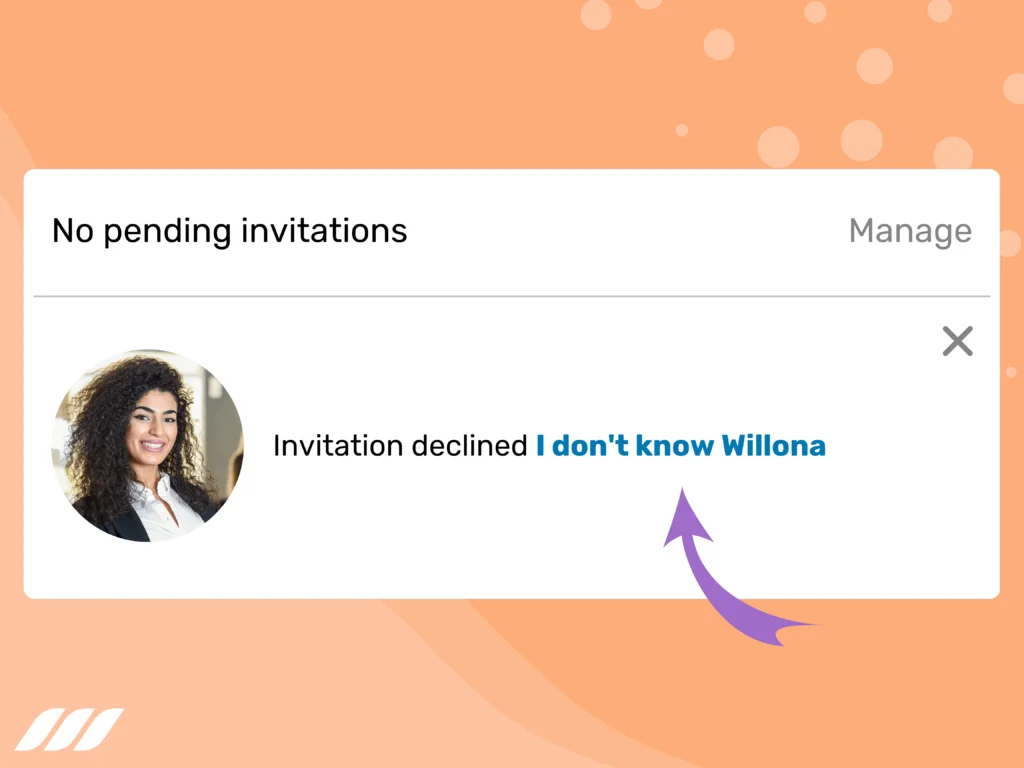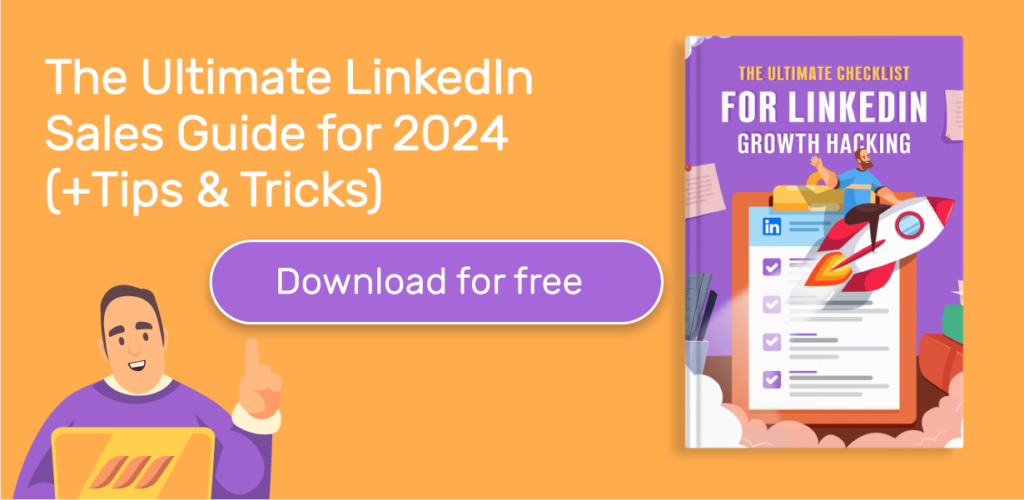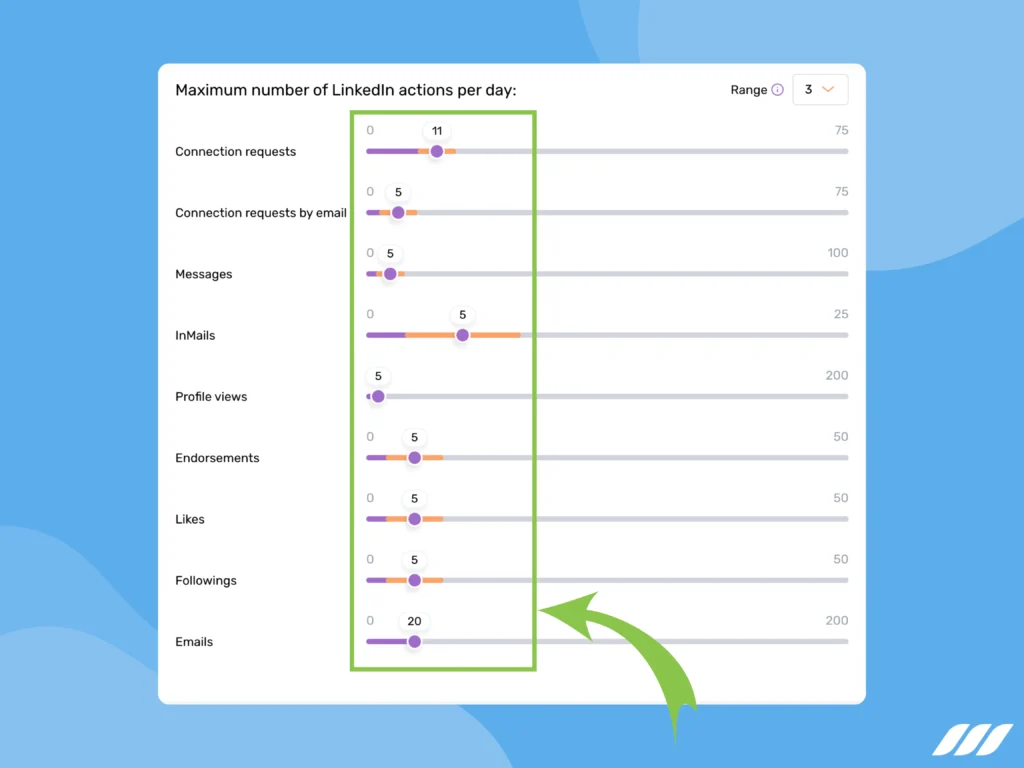|
Getting your Trinity Audio player ready...
|
Ever received a LinkedIn Warning that sent shivers down your spine? We’ve all been there. The frustration and confusion that often accompany these warnings can be overwhelming, but the key is not to let panic take the reins.
We’re going to explore everything you want to know about LinkedIn Warning. We’ll also show you how to handle a LinkedIn warning notice like a pro.
What LinkedIn Warning Is?
So, what exactly is this LinkedIn Warning that’s giving many people sleepless nights? It’s basically LinkedIn’s way of telling you, “Hold on, something’s not right.”
This notice is akin to a digital red flag waving at you, demanding your attention. It might pop up as an “Important notice from LinkedIn”, leaving you feeling like you’ve just been called into the principal’s office.
LinkedIn sends out warnings because it wants to keep the platform professional and trustworthy. LinkedIn algorithms always monitor what everyone’s up to. And if they spot something a bit off on your account – bam! – you get a LinkedIn warning.
Now, this warning isn’t out to ruin your LinkedIn presence. It’s there to make sure the platform stays pro, and everyone’s having legit, professional interactions. It might seem a bit alarming, but it’s LinkedIn’s way of nudging you back in line with professional standards.
So, what does this warning look like? Well, it can affect certain aspects of your account – limit your connection requests, messaging capabilities, and how you use the platform. In serious cases, if things don’t get better, it could even lead to your account taking a timeout.
Stressful, we know, but don’t sweat it. You can handle this and get your LinkedIn groove back.
Understanding why you’re getting these warnings and taking the right steps can help you dodge the hassle.
Related article: LinkedIn Account Restricted

Why Did LinkedIn Warning Happen and What to Do?
Now, let’s dig deep to determine why you got a LinkedIn Warning Notice.
As stated above, if your account exhibits behavior that raises eyebrows in its algorithm, you might find yourself on the receiving end of a LinkedIn Warning. It could be anything from excessive connection requests to suspicious activity – LinkedIn is watching.
Let’s explore each warning signal and walk you through practical strategies to keep your LinkedIn journey smooth and successful.
1. Sending Out Too Many Connection Requests
LinkedIn loves to help professionals connect, but bombarding folks with connection requests in a short span might stir things up. LinkedIn views excessive connection requests in a short time as possibly spammy behavior, and it’s a frequent cause of warnings.
When you receive a warning from LinkedIn, do not rush to create a new LinkedIn account. Instead, take a moment to review your activities. Make sure to send out thoughtful requests that explain why you want to connect. Remember, quality connections outweigh sheer quantity, helping you dodge warnings while building a meaningful network.
2. Excessive Messaging
Messages on LinkedIn are your lifeline, but firing them off excessively isn’t the way to go. If your messages go unanswered or get consistently labeled as irrelevant or spam, LinkedIn pays attention. When a flood of messages doesn’t land well, it can raise suspicions, and you might find yourself on the receiving end of a LinkedIn warning.
To dodge warnings, tailor your messages. No generic stuff. Aim for real, meaningful conversations. Show LinkedIn you value quality conversations, and your LinkedIn journey will thank you. Always bear in mind that building authentic connections is the cornerstone of successful networking on LinkedIn.
3. Quick Account Activities


Fast-scrolling through profiles and other similar actions may raise suspicions. It can make you look like a bot, and that’s a warning flag you want to avoid. This is a serious issue, and it may even land your account in LinkedIn Jail.
Thankfully, you can optimize your LinkedIn activities pace with Dripify’s Activity Control. This feature of the Dripify LinkedIn automation tool keeps things natural, warms up your account safely, and cuts the risk of being seen as a bot.
4. Visiting Too Many Profiles in Short Span
LinkedIn loves authenticity, and stalking too many profiles too quickly might raise brows. This could give the impression of automation or questionable activity, potentially resulting in problems with your account.
To dodge warnings, be sure to balance your profile views. Keep your moves authentic, and steer clear of excessive profile visits. This way, you’ll stay on LinkedIn’s good side.
5. Unusual Activities
LinkedIn watches your moves closely. If your actions suddenly scream “not usual,” like logging in from random spots, it can lead to a LinkedIn Warning. The platform uses this method to secure your account and shield it from any potential suspicious activity.
To avoid warnings triggered by unusual activities, you must stay ahead. Mind your LinkedIn habits. If you’re logging in from new places, keep it secure.
Pro tip: Shoot a heads-up to LinkedIn support if you’re switching it up. That’s your ticket to a warning-free zone.
6. Low Acceptance Rate
A low acceptance rate for your connection requests or a lack of responses to your messages suggests that your interactions on LinkedIn may not be as genuine as they ought to be. This could result in you receiving a warning notice from LinkedIn. It signals a need for real talk.
Instead of mass-sending generic invites, take a second to personalize them. Tailor your connection requests and messages to your target audience. Make them align with what your connections dig. Trust us; it can make a huge difference.
7. “Not Knowing You” Reports


Too many “Not Knowing You” reports? That’s a red flag. It can trigger LinkedIn to send you a warning notice.
To avoid this, ensure your connection requests make sense. Give a reason to connect. When you reach out, spill the beans on why connecting with you is mutually beneficial. Also, don’t forget to personalize your connection requests.
8. Inappropriate Content
Sharing content that goes against a professional vibe can get you in hot water. If your posts consistently cross the line into inappropriate or offensive territory, LinkedIn might not hesitate to send you a warning.
So, keep it classy and aligned with the platform’s community standards.
- Your posts, comments, and shared content should reflect a level of professionalism.
- Avoid using language or sharing materials that could be deemed unprofessional or inappropriate in a business context.
- Avoid offensive language, engaging in personal attacks, or sharing content that may be considered offensive or divisive.
- Be respectful of other people’s opinions and perspectives in their content or comments.
9. Endorsement Overkill
While endorsing others is a great way to show support, going overboard in a short span might backfire. If LinkedIn suspects your endorsements are insincere or part of some automated scheme, they could hit you with a warning.
Remember, it’s not about quantity; it’s about genuine support. Take it slow, and endorse others authentically to avoid any unwanted flags on your account.


What Can Cause an “Important Notice from LinkedIn”?
As stated earlier, there are various reasons why you might receive a warning from LinkedIn. Generally, LinkedIn issues two types of warnings: the initial warning and the subsequent one.
I Received a First Warning From LinkedIn
So, you’ve just earned your first Important Notice from LinkedIn! While it may feel like a digital slap on the wrist, think of it as a nudge to reassess your account activity.
Most likely, you’ve pushed the envelope a bit too far with connection requests or engagement. Moreover, if your messages are going unanswered, it could raise suspicions. Ensure your messages are both relevant and personalized for better engagement.
Plus, any significant deviation in your LinkedIn activity, like frequent logins from different locations, might set off a first warning. Stay mindful of your typical LinkedIn usage pattern to avoid such alerts.
I Received a Second Warning From LinkedIn
Uh-oh! Two strikes, and you’re not out, but you’re certainly being watched closely. A second LinkedIn Warning means you’re treading on thin ice, risking more severe consequences, like account suspension. It means you didn’t fix your earlier issues.
It’s time to take this seriously and make changes before LinkedIn takes more drastic measures.
- Look at what you did on LinkedIn that got the first warning. Change what needs changing to follow LinkedIn’s rules.
- If you think the warning is a mistake, talk to LinkedIn support. Be clear and polite when you explain what’s up.
- If you use Dripify or a similar tool, check your settings. Make sure they stick to LinkedIn’s rules and tweak them if needed. Stay in LinkedIn’s good books.
How to Avoid LinkedIn Warning
What is the smart move for a smooth LinkedIn journey? Avoid those warnings from the get-go. To keep your LinkedIn account safe and your B2B marketing and sales on track, check out these easy best practices.
Set Dripify Settings to the Lowest Possible


When using Dripify, it’s crucial to find the sweet spot in your settings. Aggressive automation can trigger LinkedIn’s alarms – they see it as spammy behavior. Lower the intensity, mimic human behavior, and let Dripify do its magic subtly.
- Send personalized requests to your potential connections. Not only does this lower the risk of warnings, but it also boosts your chances of making real connections.
- Keep a lid on the number of messages sent through automation tools. While these tools are handy, firing off loads of automated messages in a short time might raise eyebrows on LinkedIn.
- You can kick things off with automation and then follow up with personalized messages for genuine conversations.
- Keep your automation schedules real. LinkedIn can spot patterns that don’t match human behavior. Make sure your automation tool operates during reasonable hours and at a pace that feels natural. This helps you stay off LinkedIn’s radar.
The cool part? Dripify lets you tweak your daily activities with easy settings. In other words, Dripify lets you warm up your account on LinkedIn. You can use it to start cautiously – maybe use only a quarter of your regular limits in the first week after a warning. Then, slowly dial up your activity.
Do Not Use LinkedIn While Dripify Is Working
LinkedIn prefers real human interaction, and running an automation tool simultaneously disrupts that experience. You need to let Dripify work independently, especially during non-business hours or when you’re not using LinkedIn actively.
- Schedule your automation tool for times when you’re not likely to be on LinkedIn, like after business hours. This minimizes clashes and keeps your networking efforts smooth.
- Give your automation tool breaks to act like a human. Create inactive periods where Dripify isn’t sending actions. This way, it imitates more genuine engagement patterns.
Do Not Use Dripify With Other LinkedIn Automation Tools
Mixing and matching automation tools is like trying to bake a cake with two different recipes simultaneously. It’s a recipe for disaster. This means you must not mix Dripify with other LinkedIn automation tools.
Stick with Dripify exclusively to maintain a harmonious interaction with the LinkedIn algorithm. Using multiple accounts and tools at once can confuse things and cause conflicting actions, making LinkedIn more likely to send you warnings.
Also, remember that using outdated or non-compliant tools increases your risk of getting warnings. The good news? We always keep Dripify updated to match LinkedIn’s rules; start a free trial now!



Conclusion
So, what’s the bottom line of LinkedIn warnings? Well, as you can see, it’s all about being smart and proactive. We’ve covered the triggers and steps to steer clear of these warnings. The key? Keep it real on the platform.
Whether you’re sending out connection requests and messages or using automation tools like Dripify, authenticity matters. Make sure your connection requests are tailored and your messages are meaningful. Plus, always use safe automation tools like Dripify that allow you to take a cautious approach through easy settings.
Remember, getting a LinkedIn warning isn’t a dead end. It’s a chance to rethink and refine your game. Follow the tips we’ve laid out, stay in the loop about LinkedIn’s rules, and you’ll be building a strong professional presence while avoiding those warnings.

![How to Write a Price Increase Letter [Tips, Examples, and Free Template]](https://dripify.io/wp-content/uploads/2021/12/27.png)
![How to Write an Effective Collaboration Email [+Templates]](https://dripify.io/wp-content/uploads/2023/05/13.png)



